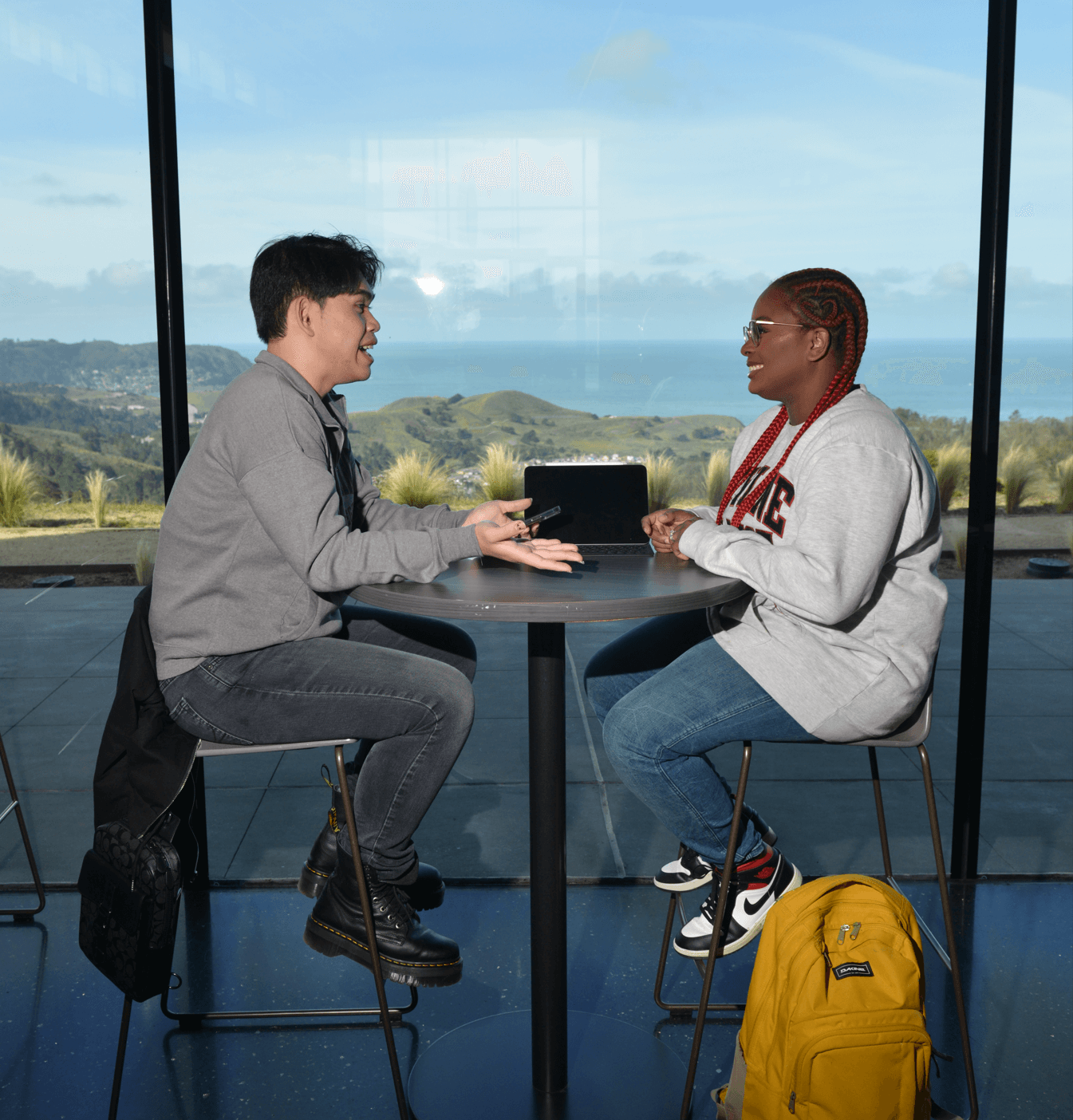World Languages
ApplyProgram Spotlight
Studying language teaches students to broaden their horizons and interpret the world through alternative perspectives. Language deeply affects the way we think about ourselves and how we communicate and interact with others, helping to build connection and understanding as part of a basic liberal education.
Skyline College’s World Languages Program offers classes in a variety of languages that serve our constantly changing Bay Area community and our students, including Spanish, American Sign Language, Arabic, Chinese, and Filipino.

Skyline College’s World Languages Program offers classes in a variety of languages that serve our constantly changing Bay Area community and our students. Language classes offer a unique opportunity for students to challenge themselves to expand their worlds and enrich their lives. Students can choose courses to study the following languages:
- Spanish (degree programs available)
- American Sign Language (ASL)
- Arabic
- Chinese
- Filipino
Career Outlook
Studying Communications provides a foundation of interpersonal, writing and critical thinking skills essential in almost any career from the sciences or finance to marketing or public relations.
Being able to speak and understand a foreign language makes job candidates more desirable for careers in almost any field, demonstrating a broad education attractive to prospective employers.
A degree in language creates gateways into a variety of career trajectories including translation services, marketing, communications, advertising, public relations, foreign service, and government, all of which directly or indirectly benefit from the global perspectives personified by foreign language speakers.
Salary ranges for jobs within these trajectories vary greatly. Public Relations Specialists in California make an average of $90,150 per year according to the U.S. Department of Labor. interpreters and translators in California make an average of $66,910 per year.
| Program | Type | Total Units |
|---|---|---|
| Spanish | AA | 60 Units |
| Spanish for Transfer | AA-T | 60 Units |
The following Learning Communities are associated with World Languages courses:
- ASTEP
Umoja-ASTEP is a learning community and transfer support program that focuses on the African American community college experience through the nurturing of knowledge, intellect, academic exploration, cultural, and spiritual identities, gifts, values and practices. - Kababayan
The Kababayan Learning Community is a transfer and support group with the goal of increasing proficiency in English skills for success in college, work, and life. It is open to all students and focuses on education in relation to the Filipino and Filipino American cultural experience. - Puente
The Puente Program is a two-semester program which links students, a counselor, an English instructor, community mentors and UC and other colleges in an effort to increase the number of students who transfer from two-year colleges to four-year colleges. Through the reading of Chicano/Latino literature and writings, counseling assistance, and connections to professional mentors, students receive the instruction and support they need to achieve academic success and transfer.
- Effective Communication: Identify and describe language structure and functions exhibiting strong ability in the main components of the linguistic system of the four basic skills: reading, writing, speaking and listening comprehension
- Effective Communication: Summarize, translate and interpret the main grammatical structures in language to offer various explanations and understandings of why and how people communicate
- Critical Thinking: Critically consider, analyze, and research special issues in sociolinguistics, bilingualism and multiculturalism.
- Citizenship: Apply cultural and grammatical theories, principles, and concepts to address real life problems and situations in the foreign language acquisition and cognition field.
- Citizenship: Bring back into the community and apply the skills, abilities, and knowledge acquired in the SKYFLA program for the improvement of others and themselves, and to further the objectives of translation, interpretation and communication in different foreign languages in society.
The college course catalog contains lists of all classes that we may offer in the current academic year.
Primary Contact
World Languages Faculty


Dean & Division Assistant
